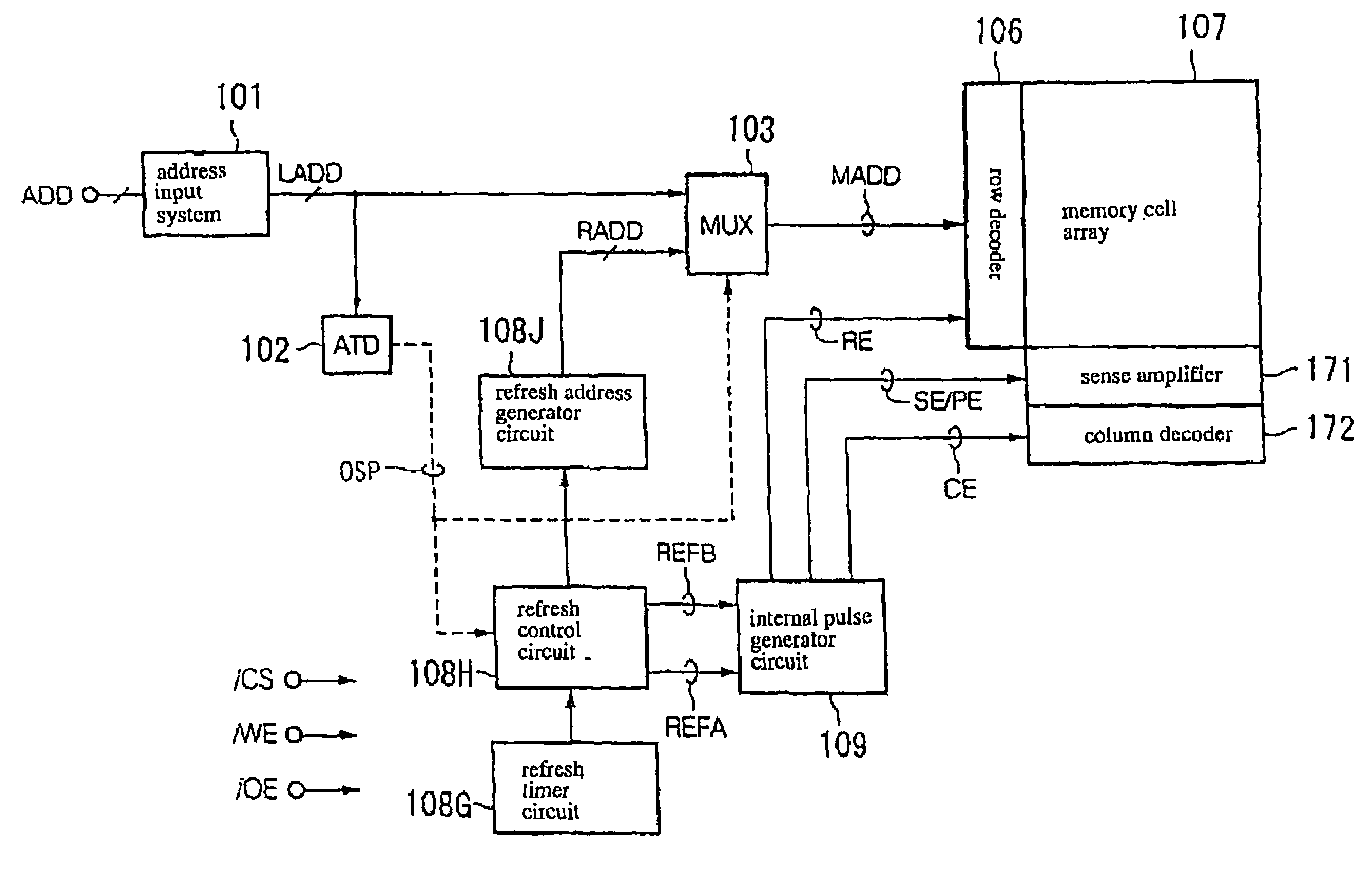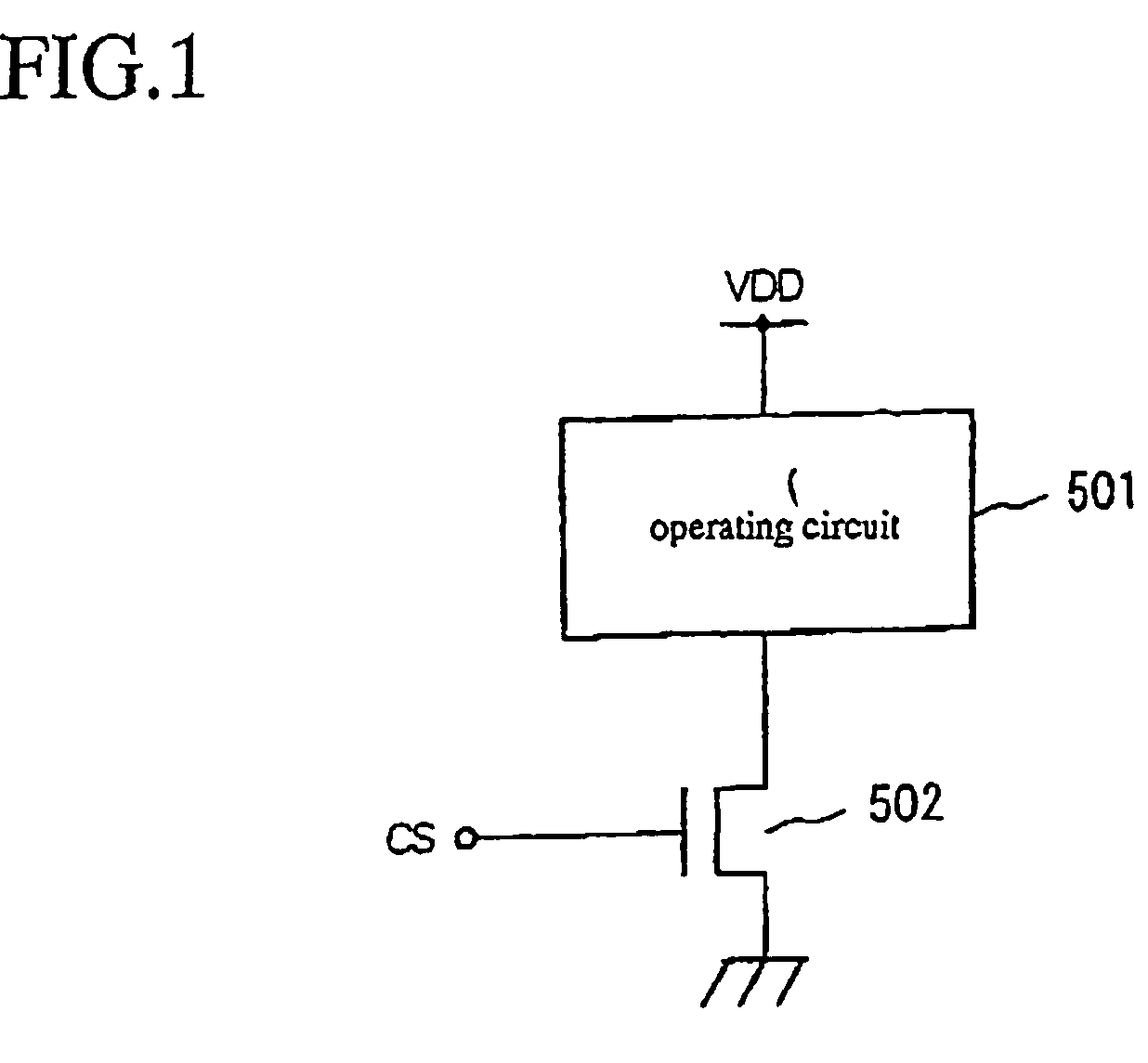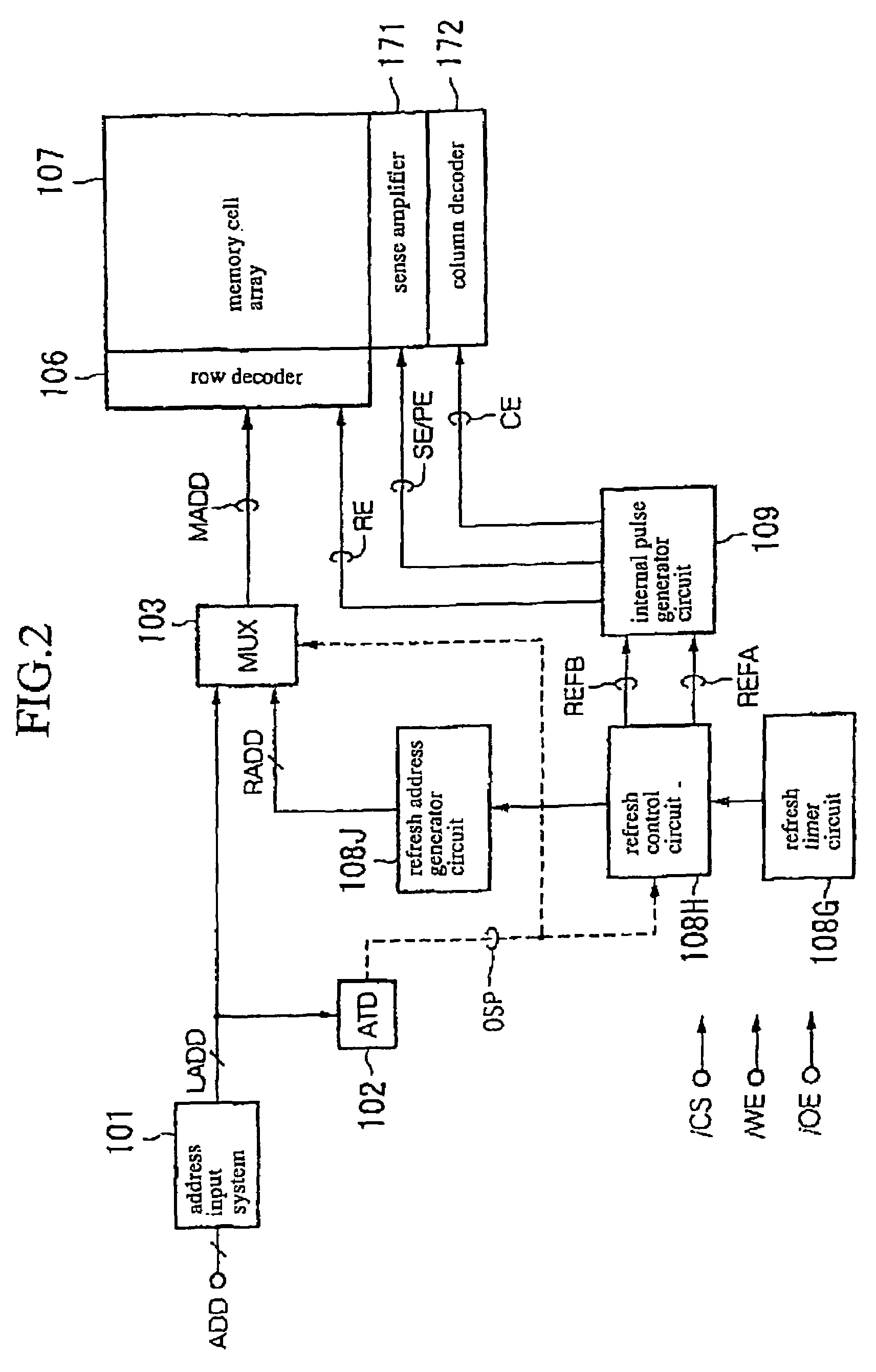Semiconductor memory device
a memory device and semiconductor technology, applied in the direction of digital storage, instruments, power supply for data processing, etc., can solve the problems of increasing the consumption of pseudo-sram power, leakage of current, and inability to achieve effective reduction to stand-by state, so as to achieve the effect of reducing the consumption of curren
- Summary
- Abstract
- Description
- Claims
- Application Information
AI Technical Summary
Benefits of technology
Problems solved by technology
Method used
Image
Examples
first embodiment
[0042]In accordance with this first embodiment, a semiconductor memory device comprises a pseudo-SRAM having a basic configuration of DRAM and being configured to allow an external asynchronous access, wherein the semiconductor memory device includes a refresh circuit system for automatically refreshing data stored in memory cells with timings matched over plural operation modes. The semiconductor memory device also includes a leak breaking means for breaking a leak path between the above refresh circuit system and either a power source or a ground in an interval of time period between the refresh operations for the purpose of reducing the consumption of current.
[0043]The following descriptions will be made for basic configuration and operation related to the refresh operations before describing characteristic configuration and operation of reducing the leakage of current of the system of circuits associated with the refresh operations.
(1) Basic Configuration and Operation in View o...
second embodiment
[0115]The second embodiment of the present invention will be described hereinafter.
[0116]In accordance with this second embodiment, in addition to the above-described configuration of the first embodiment, a gate threshold voltage of transistors forming a critical path is set lower than a gate threshold voltage of transistors forming a non-critical path. FIG. 9 shows an example of the characteristic configuration of the semiconductor memory device in accordance with the second embodiment.
[0117]This example shown in the drawing includes memory cells and those peripheral circuits. In this drawing, a MOS transistor encompassed by a circle mark is a transistor having a high gate threshold voltage. The code MC represents memory cells aligned in matrix and being connected bit lines B, / B running in a column direction, and word lines WL running in a row direction. Each of the memory cells MC comprises a single transistor and a single capacitor, wherein one electrode of the capacitor is fix...
third embodiment
[0138]The third embodiment will be described hereinafter.
[0139]In his third embodiment, a power circuit in the cell array block 1 shown in FIG. 4 in the above-described first embodiment is controlled by the internal chip select signal CSI in order to reduce the leakage of current of the cell array block 1.
[0140]The cell array block 1 has a large number of drivers for selecting memory cells for executing the refresh operations, for which reason the cell array block 1 is involved into the system of circuits associated with the refresh operations.
[0141]As shown in FIG. 11, in this third embodiment, a power supply circuit for supplying the power HVD to the above-described driver 300 shown in FIG. 9 comprises a diode 401, a p-channel transistor 402, and a CMOS-configured inverter 403. A gate threshold voltage of MOS transistors forming the p-channel transistor 402 and the inverter 403 is set higher than a gate threshold voltage of the MOS transistors forming the driver 300. A ground supp...
PUM
 Login to View More
Login to View More Abstract
Description
Claims
Application Information
 Login to View More
Login to View More - R&D
- Intellectual Property
- Life Sciences
- Materials
- Tech Scout
- Unparalleled Data Quality
- Higher Quality Content
- 60% Fewer Hallucinations
Browse by: Latest US Patents, China's latest patents, Technical Efficacy Thesaurus, Application Domain, Technology Topic, Popular Technical Reports.
© 2025 PatSnap. All rights reserved.Legal|Privacy policy|Modern Slavery Act Transparency Statement|Sitemap|About US| Contact US: help@patsnap.com



